The U.S. Army’s Future Long Range Assault Aircraft (FLRAA) programme is moving forward with two competitive demonstration contracts being awarded to Bell team and to the Sikorsky-Boeing team.
Bell is competing with its V-280 Valor solution while Sikorsky-Boeing is offering its SB>1 Defiant.
The Bell V-280 Valor

The V-280 is reported to be designed for a cruising speed of 280 knots (hence the name V-280), a top speed of 300 knots, a range of 2,100 nautical miles and an effective combat range of 500 to 800 nmi. Expected maximum takeoff weight is around 30,000 pounds.
The Sikorsky–Boeing SB-1 Defiant
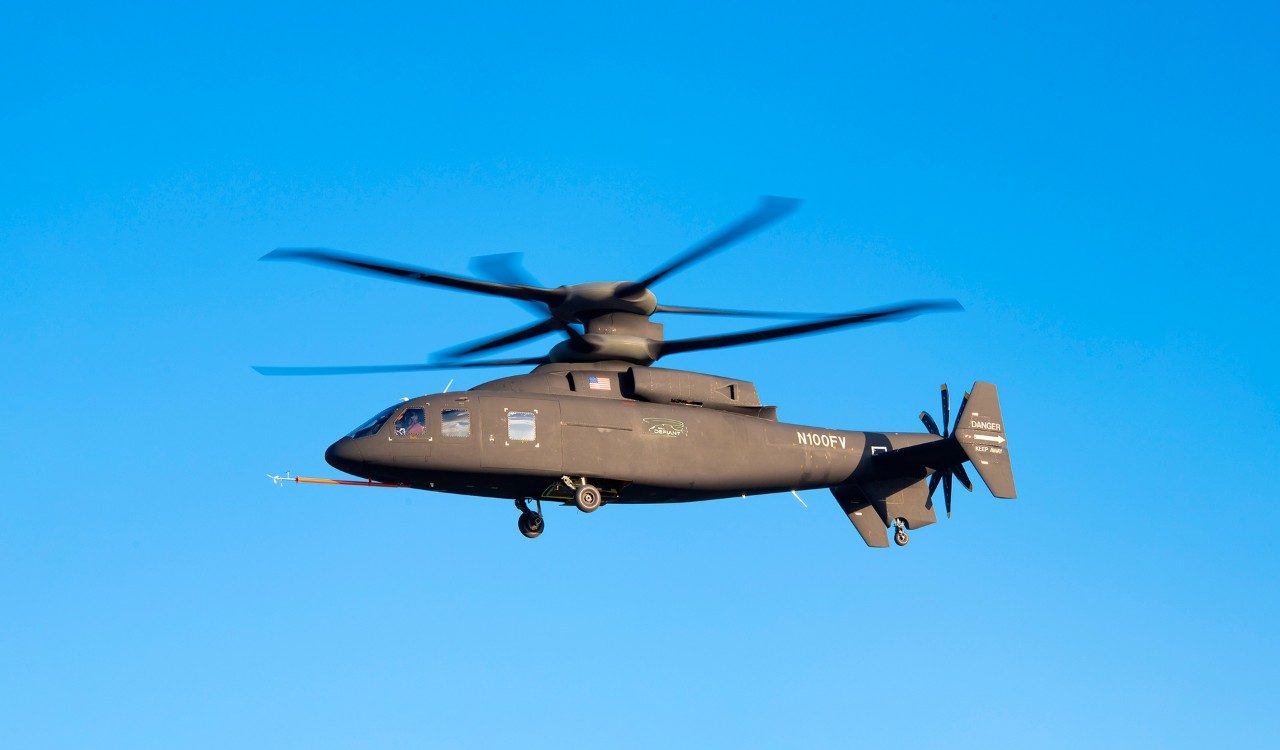
The design will have a cruise speed of 250 knots, but less range due to using the “old” T55 engine. A new engine, the Future Affordable Turbine Engine (FATE), is to meet the range requirement of 229 nmi. Compared to conventional helicopters, the counter-rotating coaxial main rotors and pusher propeller offer a 100-knot speed increase, a 60% combat radius extension, and 50% better performance in high-hot hover performance.


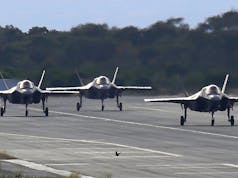
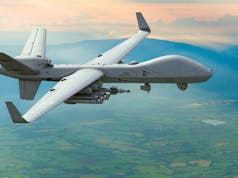
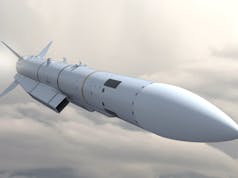

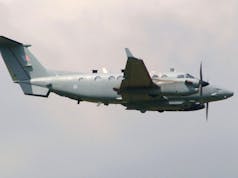

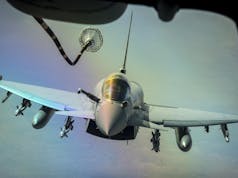




Two very different approaches to solving the problem!
Yes, one using brute force to push it up to 250kts, i.e. the Defiant. The other a design with certain flaws for an unwary pilot. Airbus already have the answer to pusher a helicopter past 250kts. If Leonardo (Westlands) put their mind to it, they also have a legacy design that could reach 300kts.
What exactly do Airbus have?
Airbus have the X3 prototype, which currently holds a number of speed records. The problem with all rotorcraft and aircraft using propellers for thrust is rotor/propeller tip speed. As the rotor rpm is generally now set and the blades pitch angle adjusted to vary the thrust. The actual speed of the aircraft through the air becomes the problem. As the aircraft’s speed increases so so does the local speed at the blade tips. The blade tips will already be operating in the transonic zone, if the aircraft goes faster it can push them into the supersonic zone. Nearly all rotor/propeller blades are designed to operate in the subsonic zone and at a maximum transonic zone. There is only one aircraft currently operating that have propeller blades designed to operate in the supersonic zone and that is the Tu95 Bear. Propeller blades usually don’t go supersonic as the rpm is confined and the actual blades are quite short.
For a helicopter it’s different, take for example a Chinook. The blades are spinning at 225rpm, but each blade is 30ft long. Therefore the relative airspeeds between the root and tip vary massively. The rotor rpm can be varied by 1 to 2% and they have lag damper, which allows the blade under air pressure to swing backward slightly. But if you have a look a the blade tip profile, you’ll see its much flatter than at the mid span section. This is to allow the blade to still generate lift as it sweeps at a much faster speed than the mid section and prevent flow separation. However, as the aircraft flies faster the local airspeed at the tips increases and if facing into a strong headwind parts of the tip may start going into the supersonic zone. The blade’s profile is not designed for this so you will get flow separation and thus drag ramps up and you lose lift. Also structurally the blade is not designed for supersonic flight and it will damage the core of the blade over prolonged time. For the Chinook the loss of lift at the tips will cause the aircraft to lose height, but also speed. However, the Chinook has other issues with its inherent tandem rotor design that limits the forward speed anyway, so its not a major problem. The pilot will quickly recognise the blade tips are going supersonic due to the aircraft slowing down and the load on the shafts increasing. The flight control system will try to compensate, but its easily controllable.
So how does the Airbux X3 get round this problem. It basically slows down the main rotor to about 80% of its normal rpm. However by slowing down the rpm you lose lift, so the aircraft has small wings to compensate for the loss of lift. The aircraft’s collective pitch angle is also reduced. This is the rotor disc angle that bites through the air, this is so that the amount of load on the rotor shaft is reduced. But by doing so you have now killed off the trust that was propelling you forward. So the aircraft has a pair of propellers either side of the fuselage. These are also variable pitch, so the thrust on either side can be varied which is how the the aircraft’s yaw is controlled.
This is a design is called a compound helicopter, but it is not a true compound helicopter. For that you need to remove all the drive to the main rotor and turn the aircraft into an autogyro. An autogyro can go significantly faster than a helicopter, because the blades are driven by the local airspeed as it passes around the blade. The X3 has been able to go 263 knots (487 km/hr) which isn’t bad when you consider the aircraft is basically an AS365 Dauphin and still uses the original engines. With an autogyro you can add at least another 100kts. At some point it will still suffer the same issues of the blade tips entering the supersonic zone, but this will be at a much higher airspeed than a helicopter could attain.
There has been a design that was way ahead of its time, whose design if used today would trounce all three, i.e. Valour, Defiant and X3. That is the Fairy/Westlands Rotodyne. This was true compound aircraft that combined both the attributes of a helicopter and autogyro. With today’s technology you would not need the blade tip jets, as the combined propeller pitch would negate the torque reaction of a driven rotor head. As soon as the aircraft got above 50kts the drive could be removed from the rotor shaft to turn the aircraft into an autogyro. Using a six or seven multi-bladed rotor head using today’s composite blades, married to a modern blade profile, significantly more lift could be generated over the original thin four metal blades, it would also reduce the rotor-diameter by quite a bit. The prototypes of the Rotodyne were reported by the test pilots to be very benign to fly and very stable in the hover. The aircraft had a similar load capacity to a Chinook, but could fly 100kts faster. If Leonardo pulled their finger out, The CH53 and Chinook could have serious competition in the heavy lift market.
Very interesting. What do you think about, one day having jet engine aircraft that work and act like helicopters? Would that be feasible or just too demanding on fuel?
Problem with the Rotodyne however was firstly the massive noise, 106 dB, not good for something operating for a significant portion of time at low level in urban environments. And secondly the appalling fuel economy. It couldn’t use standard aviation fuel as the fuel was also used to power the rocket motors, so it had to be an enriched variety.
Other thing to note was the Rotodyne actually got the majority of its lift (60%) from the wings rather than main rotor so it was more of a hovering plane than a winged helicopter. For the Airbus RACER the production version of the X3 the contribution of the wings to lift is only between 10-20%.
At the time it was cancelled the Fairey engineers believed they had a solution to the noise issue that would have significantly reduced the noise down to c95db, which would have been fine.
Always thought that if they’d held on with the Rotodyne they would have got some orders from the USAF for CSAR over Vietnam in the next 5 years…would have been ideal.
You’re not quite correct on the Rotodyne. When in forward flight, the main-wing doesn’t start to come into affect until after 50kts forward airspeed and incrementally develops it maximal lift around 90kts forward airspeed. The maximal lift of the wing is only 50% of the aircraft’s total lift, as the main rotor in autogyro mode (no power to turn head) still develops lift, but with a reduced pitch angle and a slower rotor rpm.
The main rotor in helicopter mode produced a similar amount of vertical thrust/lift as a C model Chinook, i.e. it could dead lift just over 9 tons.
As has been documented, the main issue with the aircraft was the noise, especially when landing! From a 500m height and then dropping to the landing pad, it was measured to be 115dBs, i.e. bloody loud. The Chinook by comparison is 109dBs. Fairey did develop a new noise attenuator, that dropped the tip jets efflux noise by 7dBs, which would have put it just under the noise generated by a Chinook. When in autogyro mode the aircraft generated 96dBs of noise when flying at 1000ft, mostly from the Tyne powered propellers.
The Airbus design is not a true compound aircraft. This is because the main rotor is still being driven by the engines, not air pressure. If you drive the main rotor by an engine through a gearbox you get the resultant torque reaction, also incurring gearbox efficiency losses. You also limit how fast the aircraft can travel, as the rotor tip speed is still significantly faster than the forward airspeed. Airbus are planning to make their aircraft do 275kts. It could go faster if they slowed the main rotor down even further from 80% rpm to less than 50%; even better, remove engine drive completely. Unlike the Rotodyne pitch and roll control is all done via the rotordisc. Which for a small-ish aircraft is not such a problem, but as an aircraft gets larger and heavier, it places additional loads (bending) on the main rotor shaft.
Unfortunately, it was not the noise issue that killed off the Rotodyne, but the Government of the day. It was announced in the House of Commons on 26th Feb 1962 by the Rt Hon. Mr Peter Thornycroft, Minister of Aviation: “The Government have been reconsidering the future of the project (Rotodyne) against the general economic background and need to restrict Government expenditure. So far as the military version is concerned, it is necessary to forgo the operational advantages offered by this aircraft in view of the cost involved.” As soon as this was announced, BEA cancelled their purchase for the airliner version and therefore Westland, who had by then incorporated Fairey as part of the aircraft industry rationalisation enforced by the Government in 1959, cancelled further development due to no guaranteed buyer.
In retrospect, it can easily be said that the then Government missed a golden opportunity when it cancelled the Rotodyne, especially on the back of the infamous Sandy’s white paper. But the realities of the time was that the Country was broke and living beyond its means, so something had to be cut. It’s easy to imagine if they had persisted, that the production Rotodyne would have been an all round better aircraft than the CH47s or CH53s, then about to enter service.
Are we really going to see such massive and complex airframes replace the Blackhawk and Huey?
They look far too dominated by “the need for speed” and in danger of losing attributes (ability to take fire, hard land, easily fit defensive weapons, easily maintainable) that are what has made the current generation so distinguished.
Very much seems the aviation equivalent to FCS…
This is driven by a wargame run in 2017 where they were modelling the 82AB Div against a peer enemy. In the scenario, the enemy had commercial drone technology, long ranged GBAD and massed heavy artillery (tactics taken from Donbas campaign in E Ukraine). In the first run of the scenario, the 82nd didn’t make the landing zone. It was re-set to reduce the GBAD effectiveness – they never made it off the LZ. The main lesson identified was the critical vulnerability of heli-born manoeuvre on the modern battlefield. Created a bit of a sit up moment in the British planning community too.
There is a need for speed! But also an increase in unsupported ferry range whilst loaded with supplies or pax. Both aircraft were required to do 250kts, with a cruising speed above 200kts. But also a self ferry range of 500nm without additional fuel tanks. The Defiant has yet to reach the top speed, if it can at all, whilst the Valor has gone past 265kts.
A normal helicopter cannot achieve this. The design is inherently flawed as you are using the rotor disc as you main means of lift and thrust. The Valor and Defiant have tried to split the requirement by using a pair of tilt-rotors paired with a main wing and a pusher propeller married with a coaxial head design respectively. However both designs are still a compromise. The Valor has a higher disc loading, as you need to compromise on the blade/rotor length to allow it to rotate without hitting the fuselage and without the need for an overly long wing. The Defiant uses brute force with the propeller to push it faster. Boeing/Sikorsky have not said if the coaxial rotor rpm reduces when it gets up to speed to slow the blade tips down as per a compound helicopter. The Defiant has no additional wing so it looks unlikely that the coaxial rotor rpm is slowed down. So the blade tips will still suffer the problem of increased drag and lift loss when the local airspeed goes from transonic to supersonic. No matter what fancy tips you put on the end of the blades they are still limited in producing lift when the local airspeed is supersonic. Even the excellent Berp tip is not designed to produce lift in supersonic air, (transonic only). The coaxial blades only solve the retreating blade stall problem, not the tip speed issue.
If you design a tip for supersonic flight, then you will also have to look at the rest of the blade as the supersonic air will travel down the blade. A supersonic wing profile is rubbish at providing lift at very slow subsonic speeds. The blade would also have to be substantially strengthened and much more rigid to cope with the additional forces placed on it when supersonic.
Of the two designs, the Valor will be faster and have a longer range due to the combination of the main wing producing lift and forward facing “prop-rotors” in forward flight. The wing has the benefit of reducing the load on the two discs when in helicopter mode above 50kts-ish, but is a dead weight below. It actually hinders downward thrust, hence Bell’s use of large leading and training edge flaps to reduce the wing area. The Defiant will be more nimble and probably has the ability to lift more in the hover (no wing in the way). The pusher propeller is supposed to be de-clutched when in the hover, so all the power goes to the coaxial rotor-heads for maximum lift.
Additionally to keep weight down, both aircraft use a lot of composites in the main fuselage. This is great in a nobody shooting at me scenario. However, once you start taking small arms fire, it becomes a major problem. This is because of the way it needs to be repaired, but also the length of time it takes to repair (start to finish). With a metal skinned aircraft, you literally cover the hole with a scab patch, secured with a ring of rivets.
With a composite structure first you have to work out the damage zone behind the entry point, then cut it all away. Make sure the area is fastidiously clean, then epoxy/glue in the repair. Put the repair under UV lamps and then wait for it to set and dry, which can take hours. Small bullet hole repairs in non-critical areas you can do yourself, but if it’s a load bearing area the manufacturer has to be involved with the repair, which takes up even more time. This was part of the issue with Merlin’s availability in Afghan. They were taking small arms damage just as much as the Chinook. A Chinook could get back up and flying in a matter of hours, the Merlin took days. So as a battlefield support aircraft the Merlin was rubbish due to the length of time it took to repair it. Don’t get me wrong the aircraft is excellent of other things, just not infantry support or resupply. If the Valor and Defiant are used in anger and suffer similar damage, I wonder how they are going to be repaired quickly to not become hangar queens?
How about the AgustaWestland AW609 ;P
That’s a Bell design isn’t it. That suggests to me that Bell saw something in the Valor that they didn’t in the AW609 at least for military use, not sure what overlap there might be if any. Didn’t they originally during early development split the 609 responsibility between military and commercial sectors?
Yes, both manufacturers signed a deal, where all military tilt rotor use would be produced by Bell, whilst Leonardo would do civilian. Part of the deal, precludes arming the 609. The UAE was supposed to be the launch customer with a number of coastguard versions, but nothing has happened for a while.